- News
- Reviews
- Bikes
- Components
- Bar tape & grips
- Bottom brackets
- Brake & gear cables
- Brake & STI levers
- Brake pads & spares
- Brakes
- Cassettes & freewheels
- Chains
- Chainsets & chainrings
- Derailleurs - front
- Derailleurs - rear
- Forks
- Gear levers & shifters
- Groupsets
- Handlebars & extensions
- Headsets
- Hubs
- Inner tubes
- Pedals
- Quick releases & skewers
- Saddles
- Seatposts
- Stems
- Wheels
- Tyres
- Tubeless valves
- Accessories
- Accessories - misc
- Computer mounts
- Bags
- Bar ends
- Bike bags & cases
- Bottle cages
- Bottles
- Cameras
- Car racks
- Child seats
- Computers
- Glasses
- GPS units
- Helmets
- Lights - front
- Lights - rear
- Lights - sets
- Locks
- Mirrors
- Mudguards
- Racks
- Pumps & CO2 inflators
- Puncture kits
- Reflectives
- Smart watches
- Stands and racks
- Trailers
- Clothing
- Health, fitness and nutrition
- Tools and workshop
- Miscellaneous
- Buyers Guides
- Features
- Forum
- Recommends
- Podcast
review
£4.99
VERDICT:
The Genuine Innovations Tubeless Tire Repair Kit does what it says on the tin. If you run tubeless tyres, you really should carry this
Weight:
3g
Contact:
At road.cc every product is thoroughly tested for as long as it takes to get a proper insight into how well it works. Our reviewers are experienced cyclists that we trust to be objective. While we strive to ensure that opinions expressed are backed up by facts, reviews are by their nature an informed opinion, not a definitive verdict. We don't intentionally try to break anything (except locks) but we do try to look for weak points in any design. The overall score is not just an average of the other scores: it reflects both a product's function and value – with value determined by how a product compares with items of similar spec, quality, and price.
What the road.cc scores meanGood scores are more common than bad, because fortunately good products are more common than bad.
- Exceptional
- Excellent
- Very Good
- Good
- Quite good
- Average
- Not so good
- Poor
- Bad
- Appalling
Modern tubeless tyres offer a number of benefits over traditional clinchers and inner tubes, not least their increased puncture resistance. But although they are strong and tubeless sealant does a great job, on occasion you can run over something so nasty that even the tyre/sealant combo can't do the trick. That's where the Genuine Innovations Tubeless Tire Repair Kit comes into play...
It's a simple idea: if your tyre is leaking air, ram a rubberised 'rope plug' in the hole from the outside. Job done. It's so simple the 'instructions' on the packet consist of two drawings.
> Find your nearest dealer here
The kit consists of the 'needle' (or fork, to be more accurate) plus five 'rope plugs', also known as 'anchovies' in mountain biking circles. These are made from butyl rubber coating a super-strong fibre wick, and come stuck between two clear plastic sheets. Removed from the packaging, they are best popped into a wee ziplock bag, but can be stuffed anywhere inside a tool roll or pocket pack. Weighing only 3g in total, the kit is hardly going to be to blame for you losing that KOM.
My first experience needing to use the kit was while testing the Slime Tubeless Conversion Kit on a Schwalbe One tyre. A loud hissing along with a fine fountain of green liquid indicated something was amiss, so I rolled to a stop to check. The hole was right in the centre of the tread, and a quick spin to the bottom of the tyre to let the sealant try to do its job told me this was too large to seal at the 45psi running in the front tyre.
I fished the GI kit out of my tool roll, threaded up an anchovy on the fork and stabbed it into the hole, using quite a bit of force to get through the tough tread area. I then removed the fork, and the hole sealed. That's it. The amount of air lost was so minimal I didn't bother getting the pump out – just carried on riding.
On returning home I trimmed the exposed ends of the anchovy flush with the tread using sidecutters. The cut measured 3.61mm – so fairly hefty.
After 1,250 autumn/winter miles, the repair is holding up fine. Removing the tyre to swap between rims for other road.cc testing purposes gave me a chance to inspect the anchovy from the inside and it hasn't changed, despite using several other sealants in the meantime. It now takes a fair bit of looking to find the spot where the repair was done.
Somewhat spookily, midway through writing this review I nipped out for a cheeky midday 50k, on what had to be the filthiest roads Hampshire has ever proffered for cycling enjoyment. In the last 5k I thought things were getting a bit wriggly out the back, and on returning home found I had about 10psi left in the rear tyre (28mm Schwalbe One tubeless). This further displays the amazing performance of tubeless tyres, that they can still be quite rideable having lost 55psi of pressure.
A quick check revealed a sizeable (3.5mm) flint chip embedded in the centre of the tread, still letting air out. Again, a quick whip out of the kit, anchovy on, plug in, job done. I have every reason to believe this new repair will last thousands of miles as well.
> Why you should think about going tubeless...
It's possible that you may have a cut larger than what one anchovy can seal – the practice in mountain biking circles is just to keep ramming in the anchovies until the air stops falling out. I can't comment on this for road use because every time I've used the kit one has done the job.
I've only had to resort to a tube once in a year of tubeless use, when an 8mm-long slice in a sidewall let all the air out in one explosive go. No quantity of sealant/anchovies was going to work, particularly on the part of the tyre subject to maximum flex every revolution. (A cut this large would have destroyed a traditional clincher/tube setup as well.)
I reckon the Genuine Innovations Tubeless Tire Repair Kit is a must-carry if you are running tubeless tyres. It's so small and light you won't even know it's there until you need it. Any solution that gets you back on the road in a minute or so, without having to remove a wheel or tubeless tyre, get covered in sealant, break tyre levers unmounting what could be a very tight-fitting tyre bead, or indeed without having to even put more air in, has to be worth every penny of the £4.99 outlay.
Verdict
The Genuine Innovations Tubeless Tire Repair Kit does what it says on the tin. If you run tubeless tyres, you really should carry this
road.cc test report
Make and model: Genuine Innovations Tubeless Tire Repair Kit
Size tested: n/a
Tell us what the product is for, and who it's aimed at. What do the manufacturers say about it? How does that compare to your own feelings about it?
The GI tubeless Repair Kit is for anyone running tubeless. Anyone. Whatever the sealant.
Genuine Innovations says: "Stranded? Let us throw you a rope! Our Tubeless Tyre Repair kit is the top selling rope plug kit of its kind on the market. Finally, a flat solution for your tubeless tyres! Quick and easy flat repairs now can be made on the trail. Insertion tool and plugs repair the hole in seconds!"
Tell us some more about the technical aspects of the product?
Tubeless Tyre Repair Kit * #G2650
Mini screwdriver plug threaded
Size: Handle length 1.38" Handle diameter 0.46"
Threader length 1" Threader Diameter 0.078"
5 rope plugs
Construction: Tough butyl rubber
Rate the product for quality of construction:
10/10
Can't fault it.
Rate the product for performance:
10/10
They work, immediately, and (apparently) for ever.
Rate the product for durability:
10/10
They work (apparently) for ever. I have three plugs that must be well over six months old, holding just fine.
Rate the product for weight (if applicable)
10/10
IT'S THREE GRAMS.
Rate the product for value:
10/10
For £1 a shot it will save your ride and your tyre.
Tell us how the product performed overall when used for its designed purpose
Incredibly well, Can't fault it.
Tell us what you particularly liked about the product
The satisfaction of stabbing your tyre to stop the air falling out cannot be overestimated.
Tell us what you particularly disliked about the product
Nothing.
Did you enjoy using the product? Yes
Would you consider buying the product? Yes
Would you recommend the product to a friend? Yes
Use this box to explain your score
It worked, perfectly, every time, forever (well, as long as the test period, with no sign of change). It weighs nothing, and is tiny. And it's a quid a shot. And delivers immense satisfaction.
About the tester
Age: 43
I usually ride: Merida Ride 5000 Disc My best bike is:
I've been riding for: Over 20 years I ride: A few times a week I would class myself as: Expert
I regularly do the following types of riding: club rides, general fitness riding, fixed/singlespeed, mountain biking and Dutch bike pootling
Living in the Highlands, Mike is constantly finding innovative and usually cold/wet ways to accelerate the degradation of cycling kit. At his happiest in a warm workshop holding an anodised tool of high repute, Mike's been taking bikes apart and (mostly) putting them back together for forty years. With a day job in global IT (he's not completely sure what that means either) and having run a boutique cycle service business on the side for a decade, bikes are his escape into the practical and life-changing for his customers.
Latest Comments
- Jack Sexty 6 min 28 sec ago
The main featured link goes to the actual product - unfortunately the auto-generated widget is pulling in links to the old product right now, but...
- Mr Blackbird 9 min 56 sec ago
Kudos for trying. I hope he has included a request that any cycling coverage, if it ended up on the BBC, would be nothing like it's athletics...
- Pub bike 31 min 31 sec ago
Tyre-wall braking.? It is not a new idea however. Spoon braking dates back to the 1800s....
- mike the bike 37 min 40 sec ago
Me too. And, somewhere in the shrubbery, there lurks a pheasant who achieved high office in said RCUK.
- A V Lowe 46 min ago
Hospitals are journey generators - typically 30,000+ trips per day for a big site, with a woeful assumed need to get there by private car failing...
- mark1a 1 hour 6 min ago
It's possible the issue is less to do with the Bluetooth connectivity (although it's sort of related) and that's because your workout coaching...
- chrisonabike 2 hours 18 min ago
Apparently I liked that comment, but I have no memory of that....
- mdavidford 2 hours 20 min ago
Or this?
- Surreyrider 3 hours 10 min ago
More than six times over the legal limit? She's the winner here. Her punishment is insufficient.
- Smoggysteve 3 hours 24 min ago
Sram only have a foot in the market with regards to road bike abd mountain bike (and loose variations of) The rest of the bicycles sold around the...















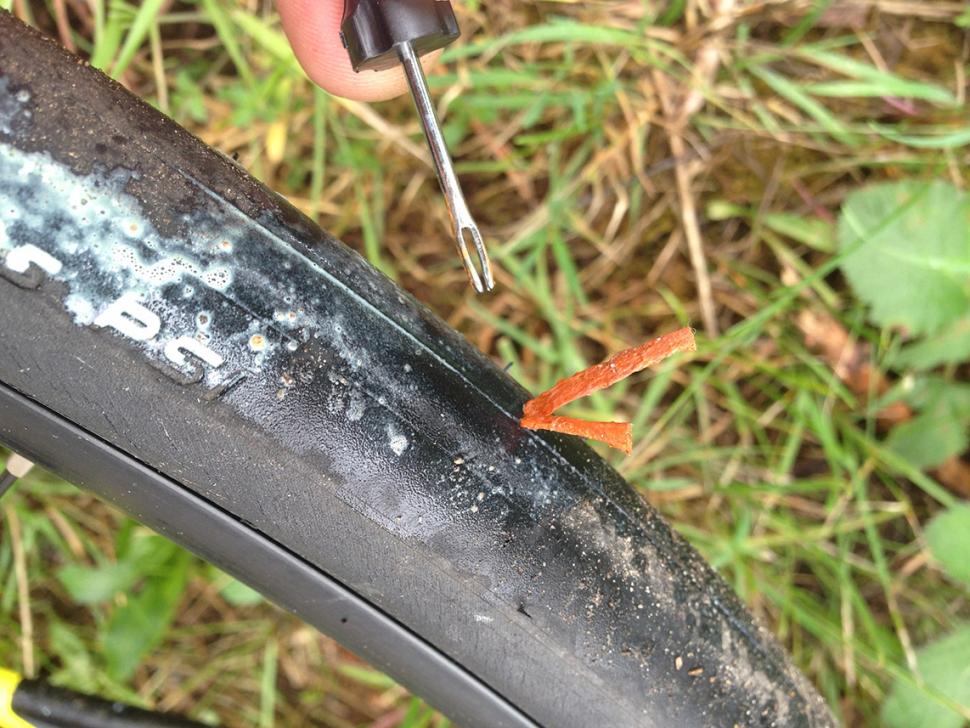
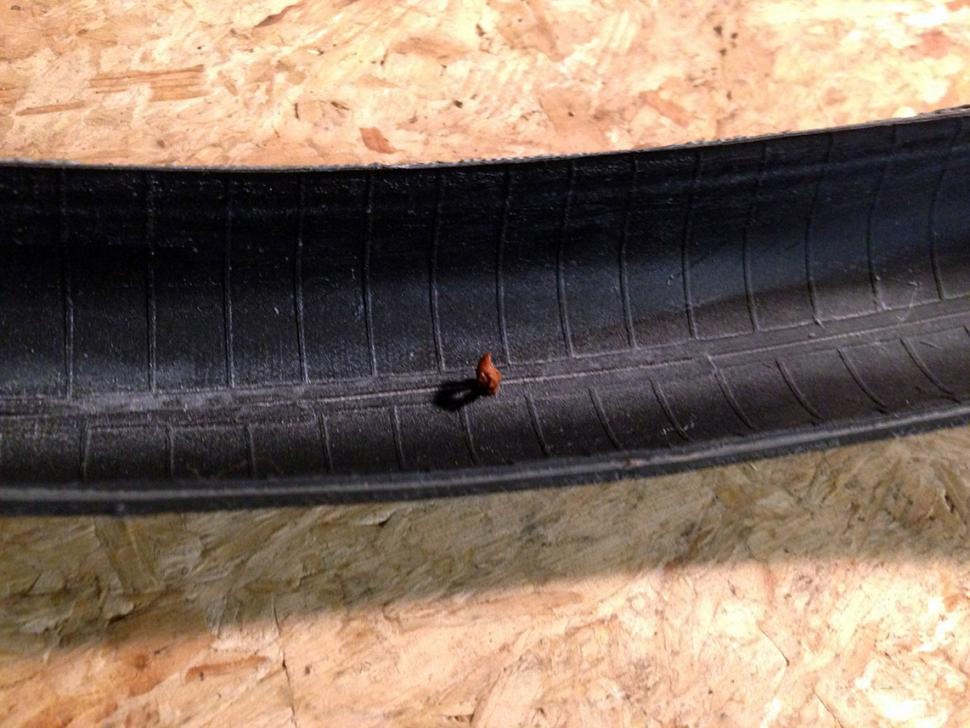
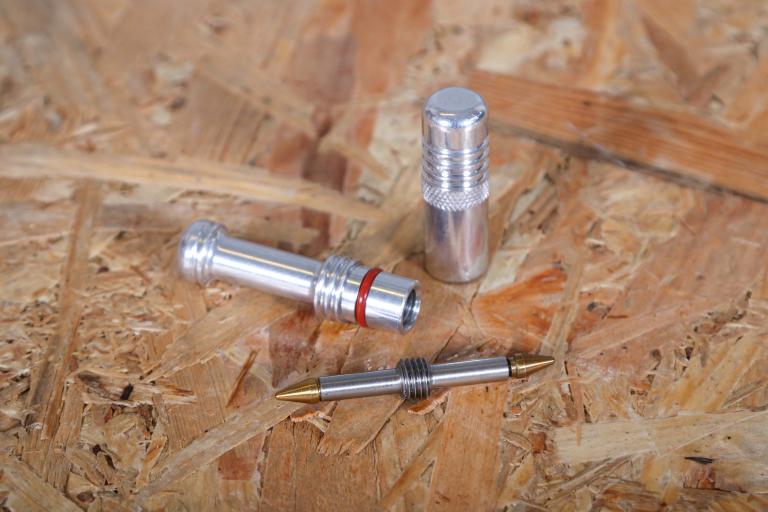
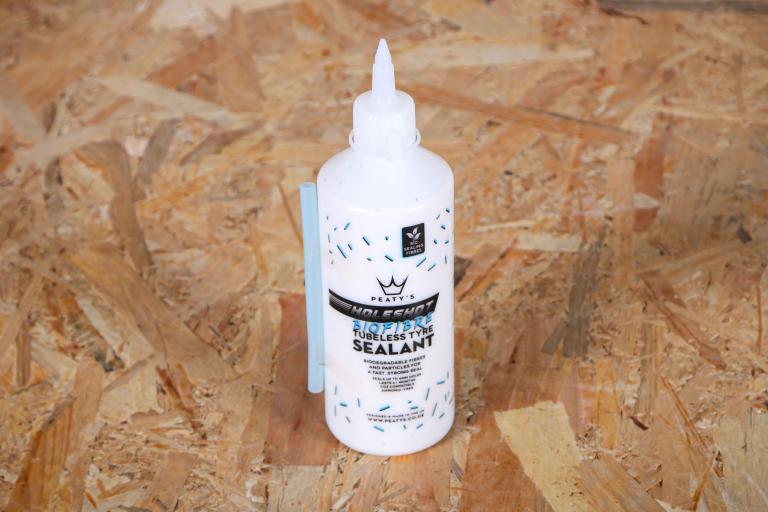
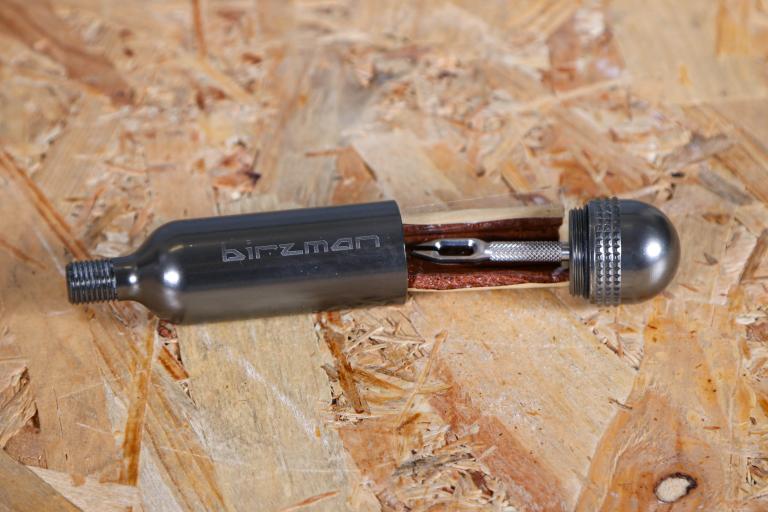
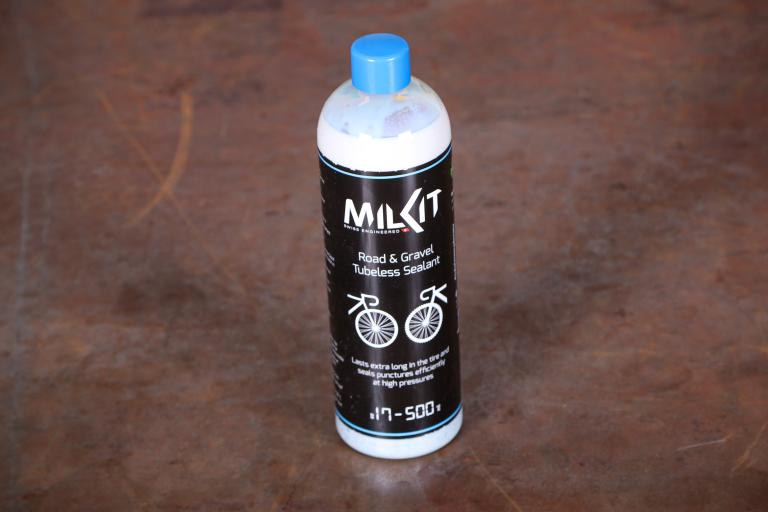
Add new comment
13 comments
Everyone should carry a tube, regardless of whether they run tubeless or not. It's good to have the option to help someone out who needs it dontchyathink? Like if Peowpeowpeowlasers had a second puncture on his anecdotal ride above?
> In the 2000+ miles I've been riding tubeless, I've seen many dozens of tubed flats from clubmates. How's that anecdote?
Meh, I've done almost 2,000 miles since the start of this year and had one puncture on tyres with inner tubes. How's that anecdote?
Can't argue with that.
However, I have no idea where, on what or how you are riding. What I can say is swapping from Continental GP 4 Seasons (a very, very good tyre in its own right) to the Schwalbe One tubeless, my ytime spent at the roadside dropped to basically nil. Living in the flintiest ruraliest part of the UK, flats were a weekly occurrence - I used to have a pile of tubes to patch every month in front of the telly. No more.
Having said all the above, yesterday I had my first flat with the Schwalbe One since October (Oct's one fixed with the reviewed kit BTW.) This time round, I had a tube inside the One as I'm using wheels that aren't tubeless yet. Got a flat, from a flint, hole must be 3mm. The repair kit would have saved me 5 cold, wet minutes and yet another tube to fix.
I'm really wanting to buy into tubeless but have seen three examples of cuts that aren't sealed by the goop, plus more amusingly a valve stemblocked by the goop that itself needed pliers to unscrew from being seated/gooped onto a rim.
I'm not saying -you- shouldn't use tubeless only that it's not ready yet for real prime time . If you have to carry a tube( or worse borrow one from a fellow rider) then it needs some more work.
It is IMO, and that of many others. YMMV obviously.
You don't have to, but you can for emergencies - no different from regular tubed tyres except you're far more unlikely to have to stop for any type of puncture in the first place. Why is it more onerous to carry a tube when running tubeless, especially when the likelyhood of needing it is pretty small ? If you're really worried about how much extra hassle it is to transport an inner tube, just take a bit of something for a tyre boot and/or wee pack of instant patches.
In the 2000+ miles I've been riding tubeless, I've seen many dozens of tubed flats from clubmates. How's that anecdote?
I agree there's a small maintenance overhead of making sure your valves don't clog / can be removed. Not hard to pop a 2-monthly reminder in your calendar to check them along with your sealant. 2-3 minutes, max.
As above, I've ben caught out once needing to boot a tyre, which would have happened regardless. You'll never get away from that risk, but compared to everything else that can go wrong on your bike it's irrelevant.
And the performance advantages of tubeless are in evidence every turn of the wheels.
i punctured my tubeless massively last week, I'll probably get around to repairing it next week, until then I will just keep on riding, it's just a bit softer and more comfy now
cant imagine I'll ever go back to inner tubes!
Whether or not you carry this on a ride is perhaps up for debate (for some). But it's clearly an effective way of repairing the tyre back home and making it nearly good as new for the next ride. I ride tubeless and carry the same kit (because its the same bag) as on my tube setup bike, partly because it would be a PITA to decide what to take out each time I switch bikes and partly because I always want the fall back option of having a tube to get me home in the worst case scenario. However, running tubeless reduces the chance of punctures interfering with the ride and anyone would be happy with that. You might ask how many punctures you'd get with tubes. Truth is you'd never know. But I can say that when I come around a corner and discover that the've been cutting hedges (again) and the road is strewn with twigs and thorns, I feel more confident it's not going to ruin my day when on my tubeless bike than on my tube bike.
So if I have tubeless tyres, I need a packet of streaky bacon too. Got it.
Do they/will they do a refill pack of just the "anchovies" to save money and save a lot of forks left lying about.
...and valve removal tool, and some extra sealant, and extra CO2 canister, and an inner tube with tire levers just in case sealant does not seal the puncture.
P.S. Don't run tubeless
I carry an inner tube, levers and patches when i'm running straight clinchers, and don't need anything else really when i'm running tubeless. A CO2 canister is un-necessary if you have a decent pump, or just carry one instead - same as with inner-tubes. I had a bead jack when I had Hutchinson Fusion 3s on Bontrager Race TLR wheels because they were a bitch to get on, but I never needed it. I had quite a few pin-prick punctures, which sealed themselves before I noticed them, but avoided the cataclysmic rips and tears that seem to obsess some. Things have markedly improved since then, reviews of more recent tubeless tyres seem to indicate they're not much more effort to sling over a rim than their non-tubeless brethen.
So, the massive difference between the two would be what ?
As Fukawitribe said, there is no need to carry 3/5ths of what you describe. And in circa 4000 miles of tubeless use last year I only had one incident where I needed an inner tube/pump. That was a massive sidewall cut that would have destroyed a clincher, and I borrowed an inner tube from a friend anyway. For a pretty long while I didn't ride with *anything* except a phone, because I keep my bike in perfect nick so ergo anything failing would have been a drive home anyway. In the last 10 years I've only had to call for roadside rescue once - when a near-new tyre delaminated to the point I wasn't comfy riding it home.
Not that packing an inner tube/CO2 is such a drag, and I'm almost always testing jerseys/jackets so need to simulate what normal folks would be schlepping anyway. But honestly I don't *need* to, tubeless is so reliable.
So less myth/hyperbole, please. Tubeless, done right, is just fine.